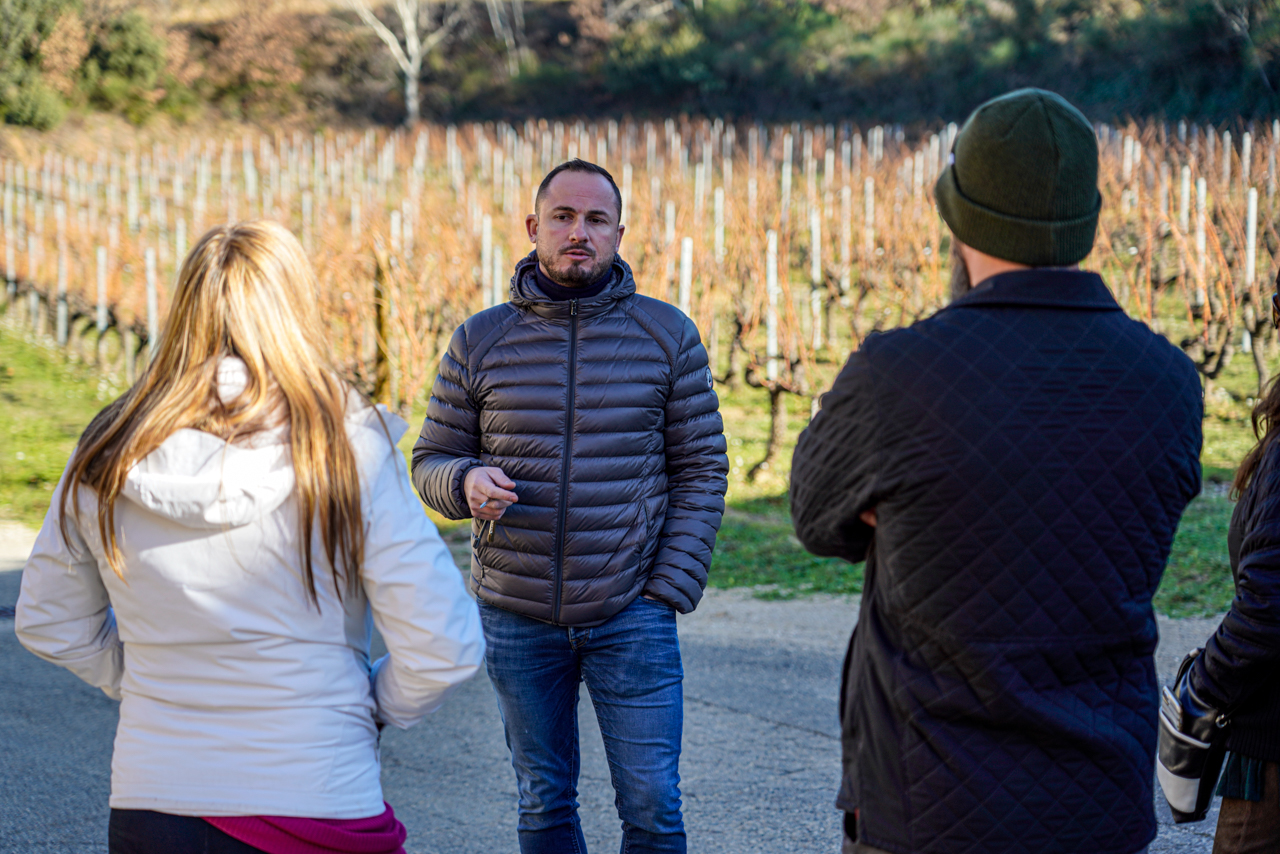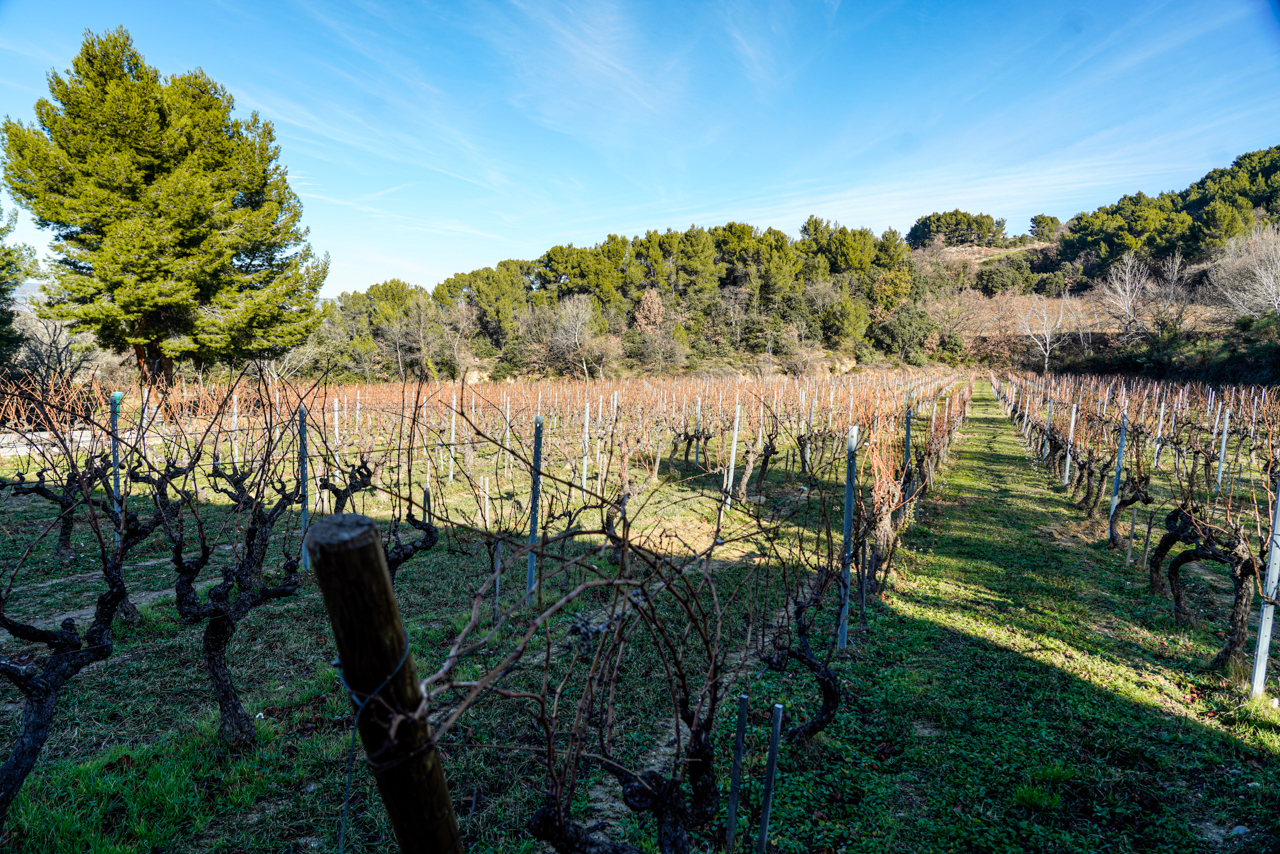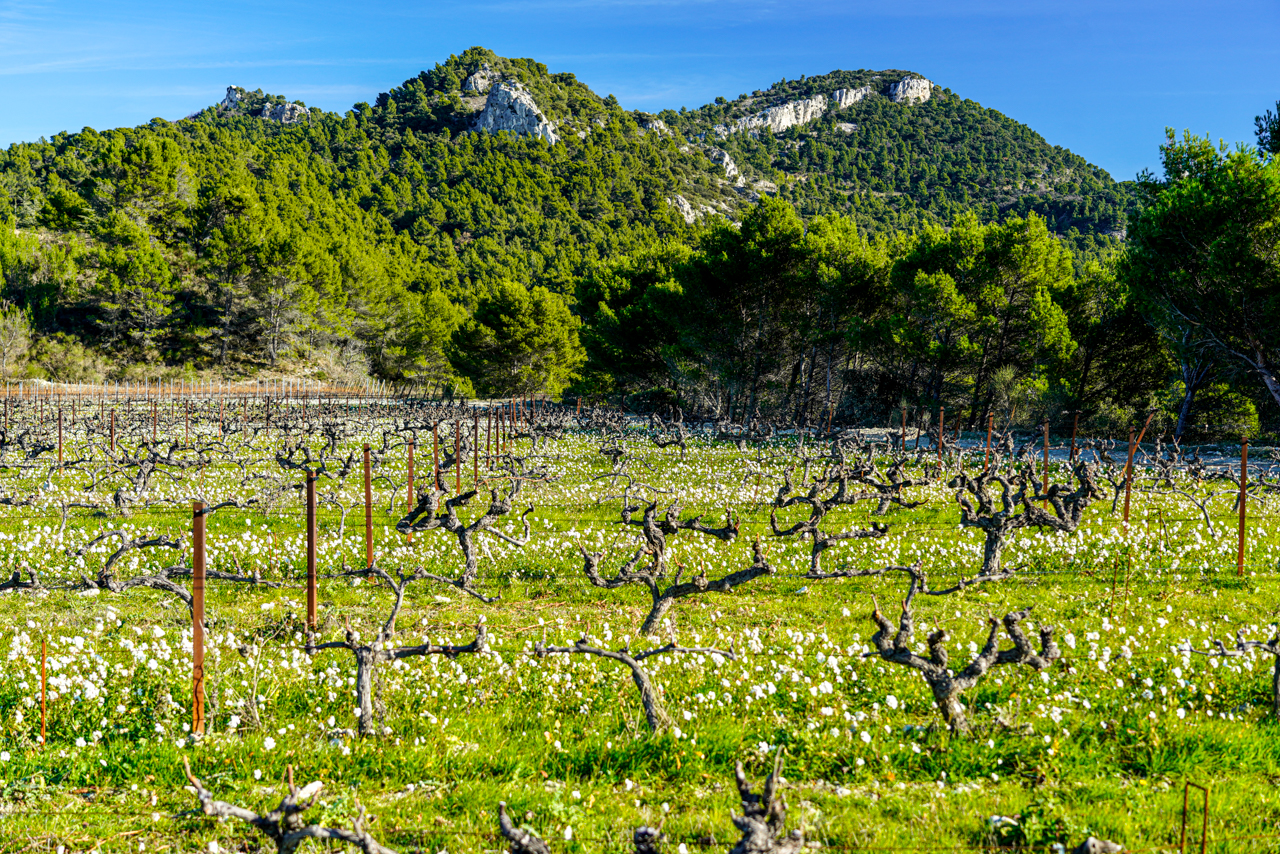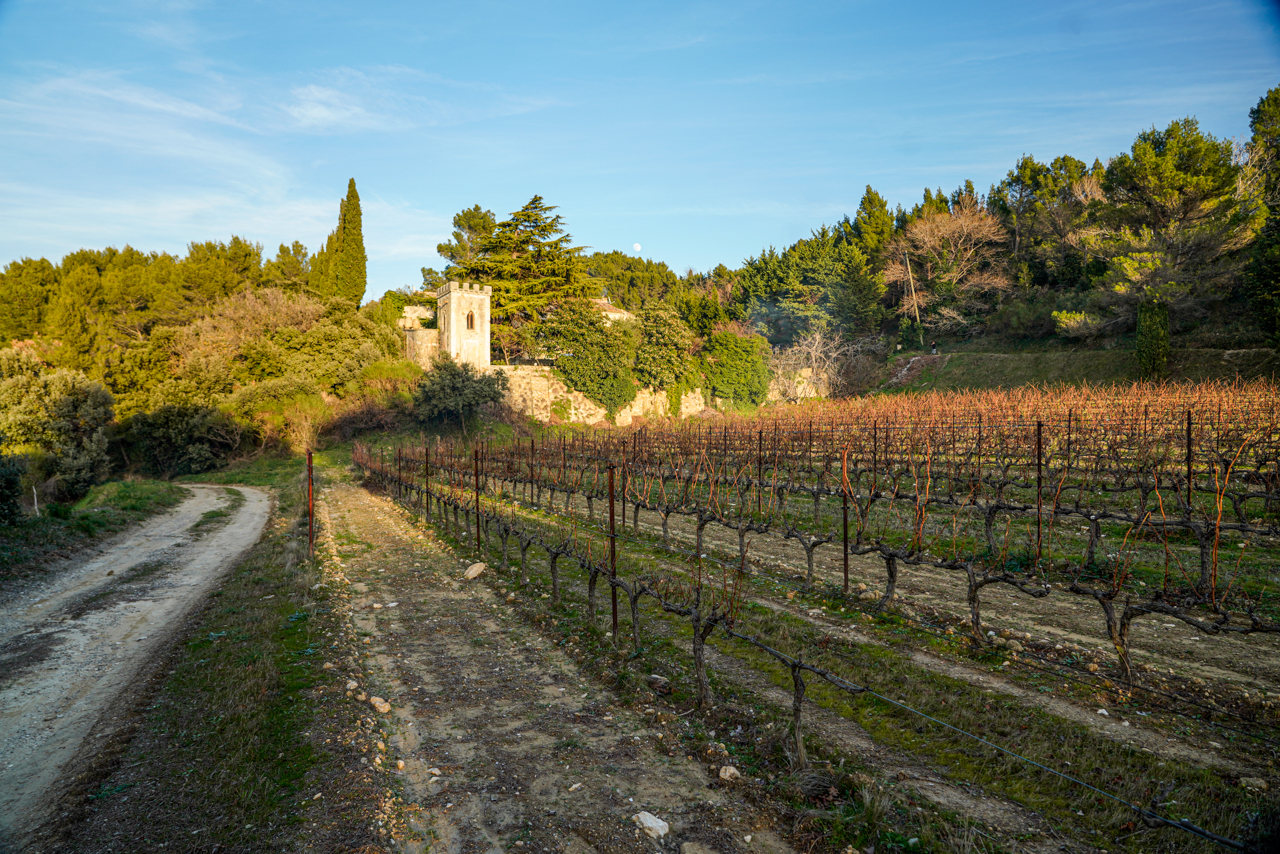

Domaine des Bosquets has deep historical roots in Gigondas. It was first mentioned as a vineyard site in 1376. Bosquets […]
Keep ReadingDomaine des Bosquets has deep historical roots in Gigondas. It was first mentioned as a vineyard site in 1376. Bosquets means “a wooded grove,” which is an apt name since many of the vineyards high up in the Dentelles are isolated and surrounded by forest. The oldest surviving buildings on the property were constructed in 1644 under Jean de Rivière Seigneur de Laval’s direction and comprised of a defensive tower, protective walls, and a solidly built provençal farmhouse. The thick walls are testament to the need for protection against the cold winds of winter, the heat of summer, and the risks of living in such a remote corner of France far from the authority of Paris. In 1674 the estate was inherited by the Chauvet family, who owned it for many generations. In the 19th century, the estate passed through Eugène Raspail’s hands. He reorganized many of the vineyard plots and terraced portions of them. In 1961 Gabriel Meffre discovered that Domaine des Bosquets was for sale. Motivated by its potential, its history and for his love of his wife Juliette who was a descendant of the Chauvet family, he purchased Domaine des Bosquets.
The property Gabriel and Juliette had purchased was in a state of disrepair. The work Eugène Raspail had begun was unfinished but by carfeully following in his footsteps, Gabriel and Juliette completed the reorganization of the vineyards, and finished the terraces that separated two vineyards sites – La Colline and Le Plateau. Many of the vines that exist today at Domaine des Bosquets were planted by Gabriel and Juliette. Relying on their friendship with the Reynaud family of Château Rayas for the budwood to replant much of the Grenache and Syrah on the property and expanding the total vineyard are to its current size of 26 hectares. When Gabriel died in 1987, Domaine des Bosquets passed to his daughter Sylvette and her sons Laurent & Julien Brechet. In 1995 Laurent built a fermentation room and cellar at Domaine des Bosquets – before that time the grapes were first sent to Gabriel Meffre’s négoce operation in Gigondas and later they were fermented and aged at Laurent’s estate in Châteauneuf-du-Pape, Château de Vaudieu.
In 2010 Julien Brechet, Laurent’s younger brother, took charge of the property. With little in the way of technical training, Laurent sent him to Château de Pibarnon in Bandol to begin his aprenticeship before finishing his informal studies at Château de Vaudieu under Philippe Cambie. Julien considers 2015 to be his first independent vintage. While Philippe and Laurent were available to answer questions, he was largely left on his own. Since that time, each successive vintage that we taste, we are astounded that wines that were so remarkable when we first added them to our portfolio just keep getting better.
Under Julien, and assisted with a small staff of six employees, he has begun to map out his terroirs through careful studies and micro-vinifications. Rather than rob his Village Gigondas of its best parts, these parcel wines are only made in limited quantities. There are seven sites that Julien farms: Jasio, La Colline, Le Plateau, Les Bosquets, Roche, Les Routes, and Les Blânches. His 26 hectares are primarily located in Gigondas, with a few hectares in neighboring Beaumes-de-Venise and Sablet. The principal grape variety is Grenache (70%), with 20% Syrah, 8% Mourvèdre, and 2% Cinsault with tiny percentages of other permitted varieties, both red and white. His estate is now certified organic, a process he started in 2015, and he he’s begun implementing biodynamically practices. Cover crops are encouraged and are plowed under to provide nutrients to the soils and ensure the vines penetrate deep into the subsoil. Care is taken to preserve the biodiversity surrounding his parcels to promote natural pest control. The average age of his vines is 50 years old, and the soils range (Julien has mapped 14 different terroirs) from sand to various gravels and types of clay – some with high levels of chalk. Average yields are 23 hl/ha for vines destined for the village Gigondas, while it drops down to as low as 15 hl/ha for some of the parcel wines. Harvests are manual to ensure a strict selection of fruit, and fermentations are now entirely with indigenous yeasts. With these farming changes, Julien has noticed better stem maturation at harvest and uses up to 30% whole clusters. His Gigondas wines are aged for two winters in French oak barrels ranging in size from 228L to 23HL. He prefers seasoned barrels to new and ages his parcel wines entirely in neutral French oak.
CloseJulien Brechet, January 2020.
Le Lieu Dit parcels adjacent to the cellars. This sheltered site is surounded on three sides by forest and is partially shaded in the morning in summer.
The soils of Lieu Dit have a high proportion of sand and fine gravels over limestone bedrock.
Named Plateau, this site has a slight incline from southeast to northwest. Le Plateau is situated above the cellar and Lieu Dit and is fairly exposed.
Le Plateau looking southeast towards the section where Syrah is grown for Les Roches.
The average age of the vines in Le Plateau is forty years old but there are some vines such as this one which are fairly older. The oldest vines of Mourvédre planted on the northwester edge of this vineyard form the heart of Le Plateau, a small cuvée supplemented by the surrounding old-vine Syrah, Cinsault, Grenache, Counoise, and Clairette.
The terroir of Le Plateau is clay limestone with pebbles and gravel.
Situated above Le Plateau is La Colline which abuts the heights of Gigondas and is noted for the high chalk content in its soils. At some of the highest altitude in all of Gigondas, La Colline struggles to reach yields of 15 hl/ha.
The fine chalky clay soils of La Colline are also some of the rockiest at Domaine des Bosquets.
The barrel room at Domaine des Bosquets is immediately below the fermentation tanks taking advantage of gravity to move the wines. Most of the harvest is aged in concrete tanks with a few demi-muids and some foudres (including some recently purchased upright ovals) all out of the frame of this photo.
Julien shared with us the original handwritten documents establishing the Domaine and dating back to the 17th century.
The view of the rest of Gigondas from the ramparts of Domaine des Bosquets. Nice urn.
While the tower may make one think this is a castle, it is in fact a handy place to store extra storm windows. The mistral can be hard on windows.
This parcel of vines below the Domaine is used for their village Gigondas and provides a good view of how the estate is tucked up in the forested uplands of Gigondas.
This "lower" elevation site still provides a pleasing view of the rest of Gigondas as well a much of the southern Rhône Valley.














